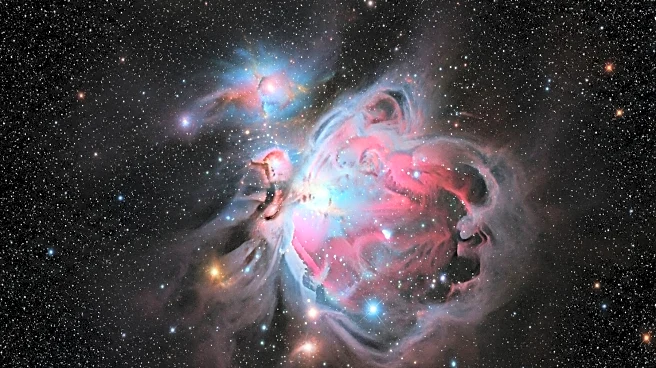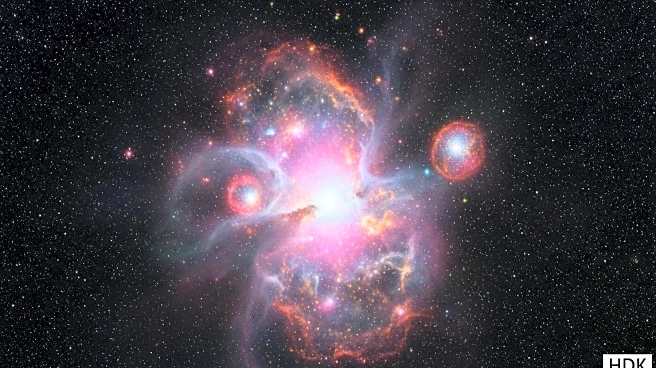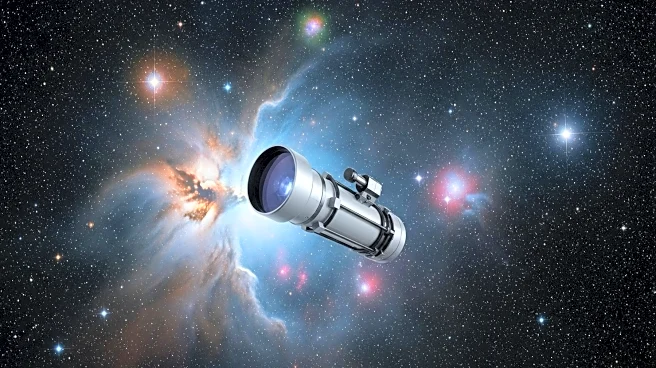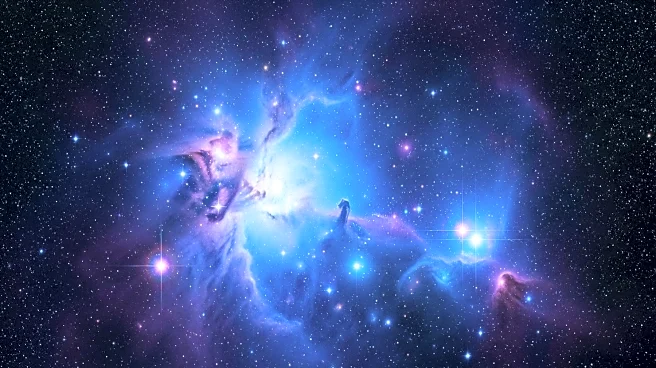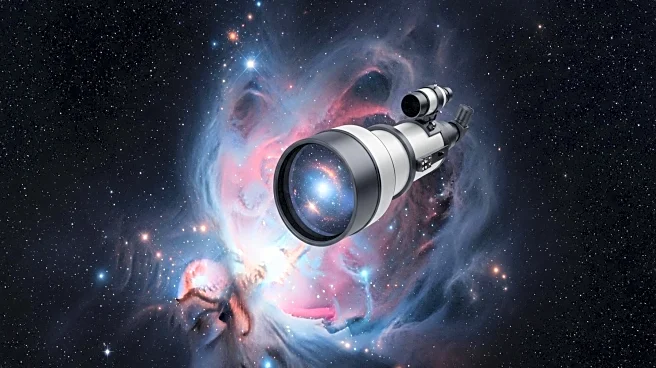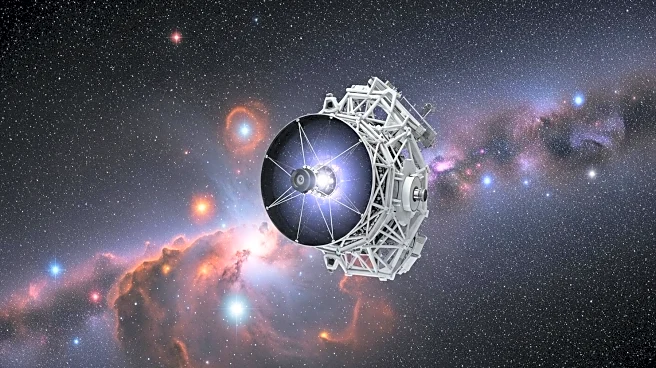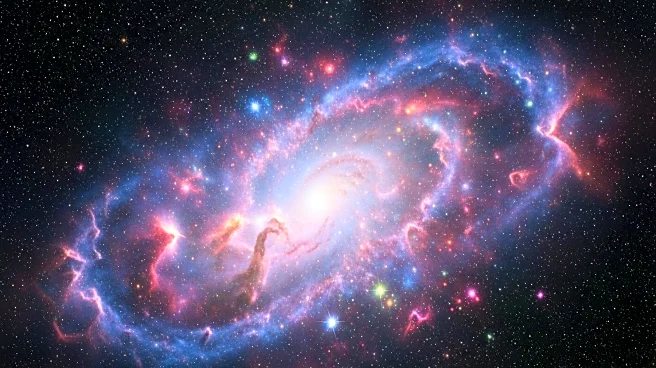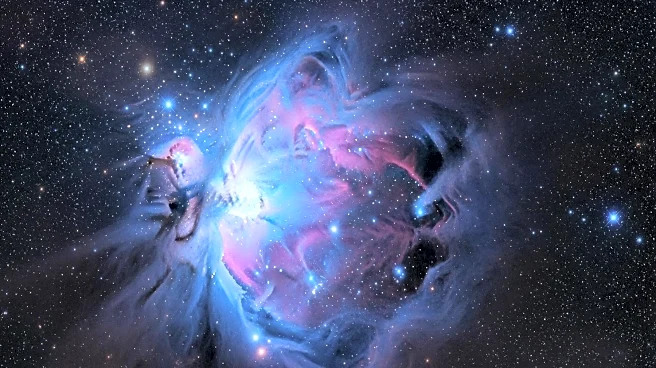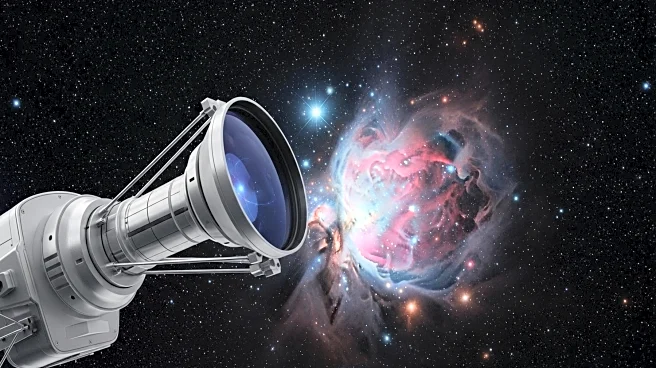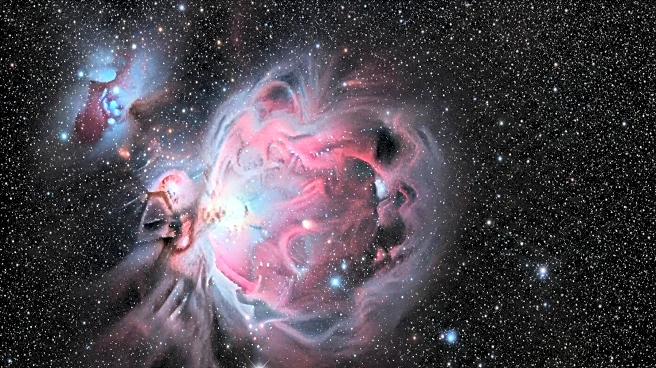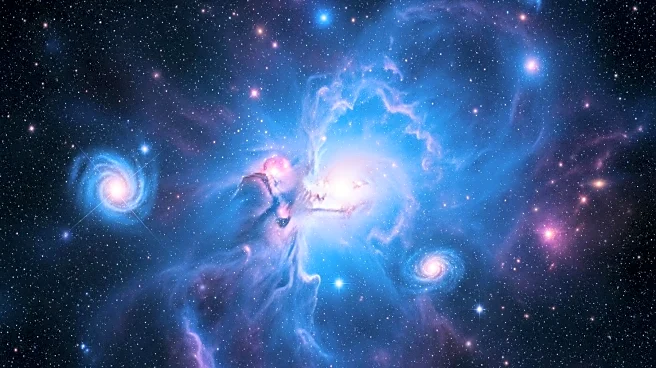What is the story about?
What's Happening?
NASA's James Webb Space Telescope has provided unprecedented insights into the Sagittarius B2 molecular cloud, the largest and most active star-forming region in the Milky Way. Using its Near-Infrared Camera (NIRCam) and Mid-Infrared Instrument (MIRI), Webb captured detailed images revealing massive stars, glowing cosmic dust, and dense clouds where new stars are forming. The images show stars, gas, and cosmic dust in near-infrared and mid-infrared light, offering a glimpse into the complex processes of star formation. The Sagittarius B2 cloud is located near the supermassive black hole at the galaxy's center, known as Sagittarius A*. The observations highlight areas where stars are forming inside dense clouds, which block their light, and reveal the warm dust surrounding young stars.
Why It's Important?
The discovery is significant as it enhances understanding of massive star formation and the dynamics of the galactic center. The detailed images from Webb's instruments provide new data that could help unravel mysteries surrounding star formation processes. This information is crucial for astronomers to understand why Sagittarius B2 is more active than other regions in the galactic center. The ability to observe these phenomena in such detail could lead to breakthroughs in astrophysics, particularly in understanding the lifecycle of stars and the conditions that lead to their formation.
What's Next?
Further research is expected to focus on the masses and ages of the stars within Sagittarius B2, which will aid in understanding the star formation process in this dense region. Scientists will continue to analyze the data from Webb's instruments to explore the conditions that make Sagittarius B2 so active. This could involve studying the interactions between stars, gas, and dust, and how these elements contribute to star formation. The findings may also prompt new theories about the evolution of the Milky Way and the role of star-forming regions in shaping the galaxy.
Beyond the Headlines
The observations from Webb could have broader implications for understanding the universe's evolution. By studying star formation in such detail, scientists can gain insights into the processes that have shaped galaxies over billions of years. This knowledge could inform models of galaxy formation and evolution, providing a deeper understanding of the universe's history and future.
AI Generated Content
Do you find this article useful?
